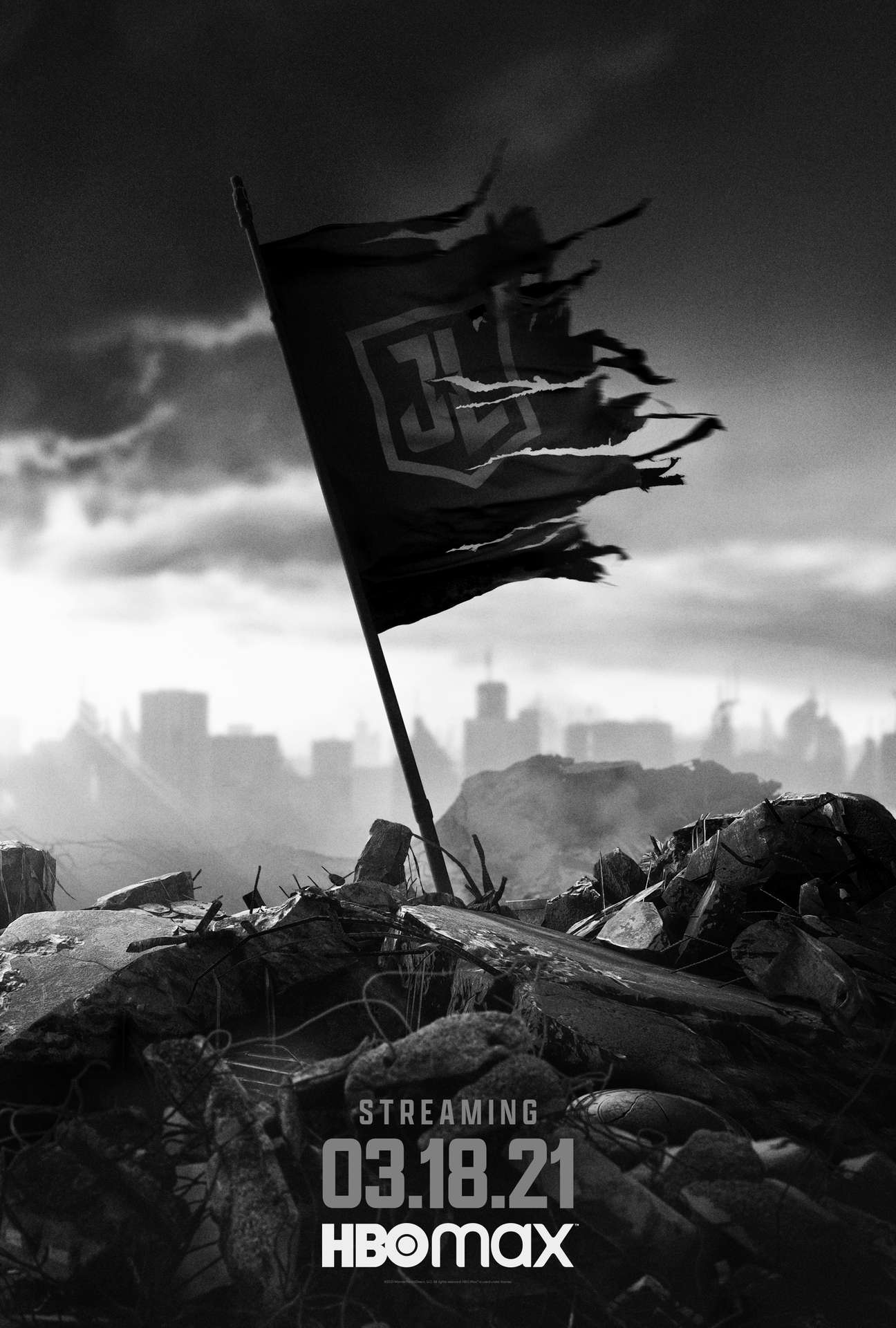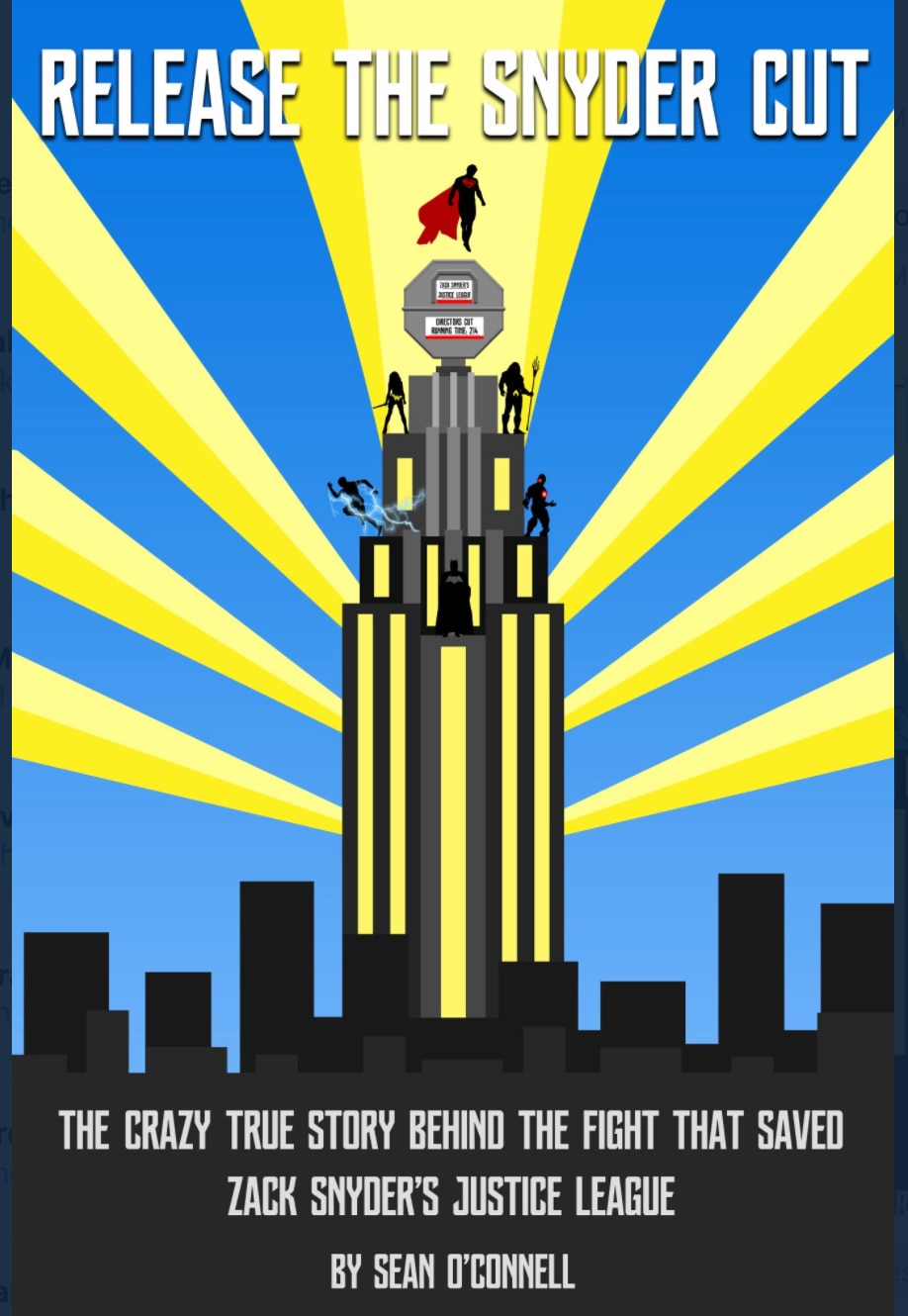Create a free profile to get unlimited access to exclusive videos, sweepstakes, and more!
New Justice League book digs into untold story of Snyder's exit, birth of 'Snyder Cut': 3 revelations

It’s well-known by now that Zack Snyder’s Justice League, which debuts on HBO Max March 18, wouldn’t exist if not for the relentless efforts of the fandom that rallied around the #ReleasetheSnyderCut movement. Synder's four-hour, R-rated version of Justice League is happening because these fans demanded it, and didn't let up until HBO Max made it a reality.
The full story of the "Snyder Cut" movement, from its humble beginnings to the fundraising that has generated more than $200,000 for suicide prevention in honor of Zack and Debbie Snyder’s late daughter Autumn, is detailed in the new book by Sean O’Connell, Release The Snyder Cut: The Crazy True Story Behind The Fight That Saved Zack Snyder’s Justice League, due out March 1.
We got our hands on an advance copy of the book, and highlighted three key details that O’Connell uncovered as he chronicled the three-year fight to get the Snyder Cut released. From the other reasons Snyder left the project in the first place, to how the HBO Max deal came together, let's dig in.
How social media made it happen
The Release The Snyder Cut community sold T-shirts at cons (with half the profits going to charity), it leased a plane to fly a banner over the Warner Bros. studios in Burbank, California, and even took over a digital billboard in Times Square. But it was its nonstop drumbeating on Twitter, Facebook and Instagram that finally pushed the studio to call the director and see if he really did want to release the Snyder Cut.
In an interview Snyder conducted with O’Connell for the book, the director mentioned he had seen an article that indicated his unreleased film had the biggest digital footprint of any Warners project at the 2019 San Diego Comic Con. A filmmaker who is well aware that it’s called “show business” for a reason, the director reportedly compiled analytics showing this grass-roots movement had done better work than the studio’s own highly-paid marketing team at boosting awareness … for a film that didn’t exist! That was all the leverage he needed.
In the book, Snyder is quoted as saying: “I don’t know if you’re aware of it, but the biggest, the most volume for any social media campaign for any movie Warner Bros has ever done is for a movie that you guys never released," he said in the book. "The most tweets, the most social media noise in the history of Warner Bros. is for a film that you guys don’t have out.’ And at that stage in time, had no intention of releasing. In what world is that okay?”
WB reportedly gave Snyder as much as $70 million to complete his vision of Justice League. In the May 2020 press release officially announcing the release of Snyder’s JL on HBO Max, Warner Media chairman Robert Greenblatt highlighted the indefatigable Release The Snyder Cut fanbase as the reason the project was happening.
O’Connell says the streaming service provided the perfect landing spot for Snyder’s passion project. “I don’t think you would see this cut if not for the existence of HBO Max. The existence of the streaming service gave [Warner Bros.] an avenue that it was feasible to then say to Zack, “we’ll allow you to release your cut.””
Snyder’s family tragedy wasn’t the only reason he left Justice League
It’s long been reported that the reason Snyder stepped away from the Justice League director’s chair was due to the death of his and wife Deborah Snyder’s daughter. But in the book, Snyder admits the constant battles with the studio over the movie was also a major factor in his leaving the project.
“I was just kind of done with it,” Snyder said in an interview included in the book. He goes on to say, “I had no energy to fight [the studio], and fight for [the movie]. Literally, zero energy for that.”
Those fights had begun after the backlash to the dark themes and tone in the critically reviled Batman v Superman: Dawn of Justice led WB execs to rethink the direction of the DC movie universe. Even before he decided to walk away, Snyder knew he would never get to see his vision for the DCEU play out.
One other note: In the book, Snyder says he doesn’t remember anyone at the studio offering to delay the release of Justice League so he could take time to grieve, and then return to finish it.
The movement began with a Change.org petition
O’Connell pinpoints the origin of the movement to right around the time when Justice League was released in theaters, November 17, 2017. A Puerto Rican fan named Roberto Mata launched a petition on Change.org called, “Zack Snyder’s Director’s Cut and Tom Holkenborg’s (Junkie XL) Score for Home Release."
That petition, which collected 179,322 signatures, was the first instance of an organized call to get Snyder’s vision released.
Mata wasn’t the only fan who quickly noticed the vast differences between Joss Whedon’s film and the movie fans had been promised in earlier trailers, which contained scenes that never made it into the theatrical cut. One such person was Fiona Zheng, who runs a medical clinic in China. She reportedly issued the first tweet declaring the belief that a “Snyder Cut” actually existed on November 21, 2017.
Because of that, and a lot of subsequent work she did to organize supporters, Zheng is considered by many in the Snyder Cut fan community to be the founding mother of the movement. “Fiona was one of those people who was there from day one of the movement,” O’Connell told SYFY WIRE. “I think because she was so vocal early on, Zack sort of took her under his wing and trusted her enough to let her know things behind the scenes.”
Release The Snyder Cut: The Crazy True Story Behind The Fight That Saved Zack Snyder’s Justice League hits shelves on March 1.



























